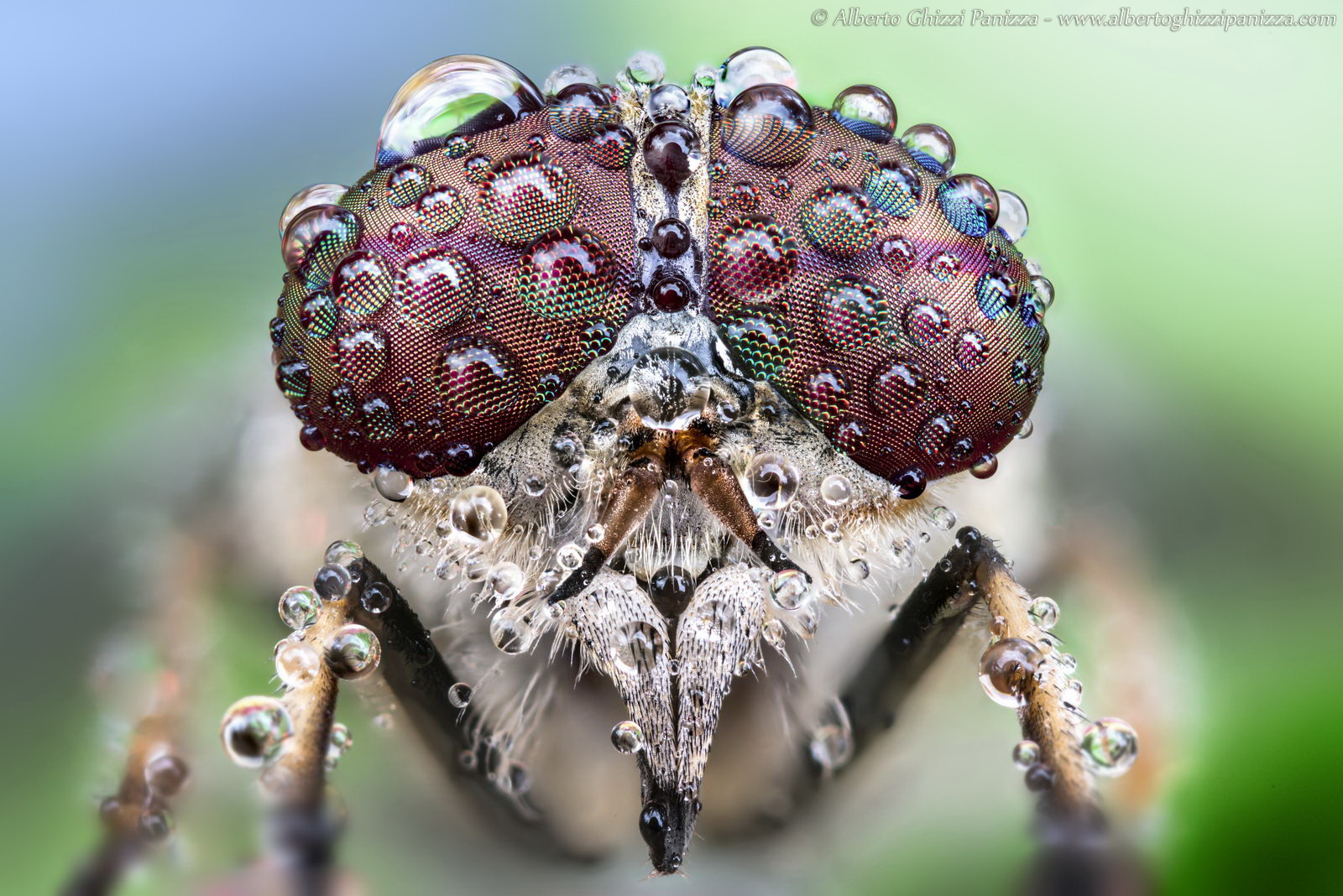Jednotky pro analýzu celého pole
Jak získat trojrozměrný pohled na celou galaxii jedním snímkem
Představte si mouchu. Pokusili jste se někdy nějakou chytit? Aby se vám to povedlo, musíte být opravdu rychlí. Stejně jako většina ostatních druhů hmyzu jsou totiž schopné detekovat pohyb v celém prostoru 360° kolem sebe. A tajemství je ukryto v jejich složených očích, které se skládají z velkého počtu drobných fotoreceptorů (známých jako ommatidia). Pracují společně, aby poskytly jeden velmi široký obraz v podobě jakési mozajky. Například mravenci mohou mít těchto fotocitlivých receptorů jen několik nebo třeba i tisíc, motýli a vážky jich ale mají třeba několik desítek tisíc. A čím větší je počet, tím důkladněji je pokryto zorné pole a tím lepší detaily okolního světa je schopen konkrétní druh vnímat.
S využitím podobného principu (ovšem ke zcela jinému účelu) vyvinuli vědci přístroj, který je označován zkratkou IFU (integral field unit, jednotky pro analýzu celého pole). Zorné pole každé IFU je rozděleno na mnoho buněk (segmentů), aby bylo možné získat komplexní pohled na zobrazovaný celek. Jednotky IFU jsou hojně využívány například při zíkávání informací o životním protředí (Earth remote sensing) a ve specializované podobě při předpovědi počasí, sledování přírodních katastrof nebo klimatických změn.

V astronomii umožňují jednotky IFU získat mnoho informací najednou (během jedné expozice) o rozsáhlých objektech jako jsou mlhoviny, galaxie nebo hvězdokupy, a to prostřednictvím metody známé jako spektroskopie celého pole (integral field spectroscopy). Signál z každé buňky (nebo pixelu) zkoumaného zorného pole je přiveden na vstup spektrografu, ve kterém je získáno spektrum pro každý jednotlivý element obrazu. Všechna získaná spektra tvoří takzvanou datovou kostku (datacube, viz Obr. 1), která obsahuje celé dvojrozměrné zorné pole a 'třetí rozměr' dodávaný spektrografem, který světlo rozdělí na jednotlivé vlnové délky (viz Obr. 2). Astronomové mohou informace získané protřednictním spektroskopie celého pole použít například k měření pohybu plynu ve vzdálené galaxii (viz eso1437) nebo vzdáleností jednotlivých galaxií, které v zorném poli naleznou (viz eso1507).
Různé typy jednotek IFU využívají pro rozdělení zorného pole rozdílné techniky. V astronomii se nejčastěji využívají tyto:
- pole mikročoček (velmi se podobá složenému oku hmyzu)
- svazek optických vláken, který může být použit samostatně nebo v kombinaci s polem mikročoček (viz Obr. 3)
- dělič snímku (viz Obr. 4).
Autorem myšlenky jednotek IFU je G. Courtes (1982). První praktickou aplikaci v astronomi si připsal přístroj TIGER, který spatřil první světlo v roce 1987 v kombinaci s 3,6-m dalekohledem Canada-France-Hawaii Telescope (CFHT) na Mauna Kea, Hawaii. Jednotka IFU použitá v tomto přístroji byla typu 1.
Prvním přístrojem ESO určeným ke spektroskopii celého pole byl SINFONI, který byl v kombinaci s dalekohledem Very Large Telescope (VLT) poprvé použit v roce 2004. SINFONI využívá dělič obrazu stejným způsobem jako jeho nástupce přístroj MUSE, který je vybaven obří jednotkou IFU. Rovněž spektrograf pro analýzu více objektů FLAMES využívá dvě jednotky IFU, druhá generace infračerveného spekrografu KMOS oproti tomu využívá 24 malých jednotek IFU, z nichž každá je instalována na pohyblivém rameni. Rovněž přístroj VIMOS obsahuje poměrně velkou jednotku IFU, ve které jsou kombinovány mikročočky a svazek optických vláken. Přístroje však mají rozdílné charakteristiky — jsou citlivé na různé vlnové délky, mají různě velké zorné pole a spektrální rozlišení — a díky tomu jsou vhodné pro sledování různých typů objektů a zkoumání různých aspektů sledovaných zdrojů.
Spektrografy pro analýzu celého pole jsou stále sofistikovanější, používají větší detektory schopné pořídit ostřejší záběry a posunout tak naše chápání vesmíru. Když zůstaneme u srovnání s hmyzem, dalo by se říci, že se jednotky IFU vyvinuly od 'mravenců k vážkám'.
Vědecké úspěchy
- FLAMES vědecké úspěchy
- VIMOS vědecké úspěchy
- SINFONI vědecké úspěchy
- MUSE vědecké úspěchy
- KMOS vědecké úspěchy



